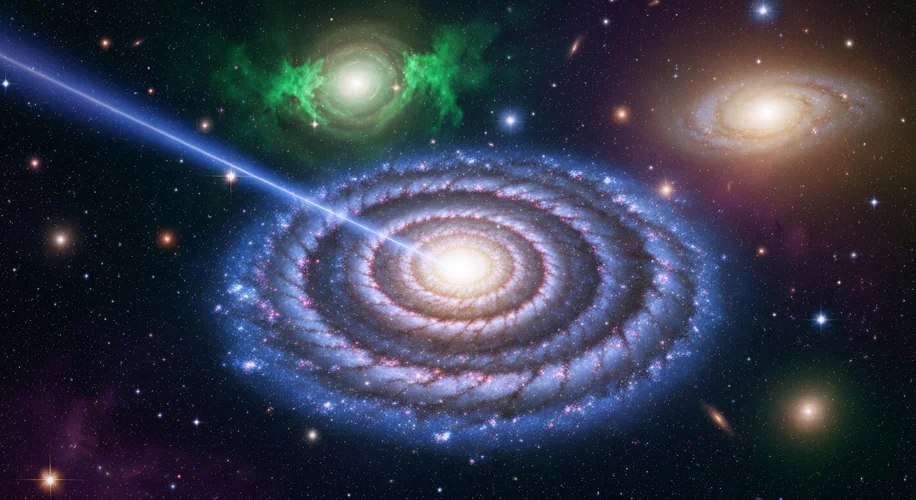Did you know that astronomers have recently detected a fast radio burst (FRB) that originated an astonishingly short time after the Big Bang? This isn’t just about finding a distant signal; it’s like finding an ancient whisper from the universe’s infancy, dating back to when the cosmos was only about 3 billion years old. This discovery, reported by PHYS.Org, gives us a unique window into the very early universe and the conditions that existed then.
As someone with a background in atmospheric science and a deep interest in Earth and space sciences, I find this incredibly exciting. It’s a reminder of how vast and ancient our universe is, and how much we’re still learning about its history.
Fast radio bursts are intense, brief flashes of radio waves that come from deep space. While many have been detected closer to us, finding one so incredibly distant is a significant achievement. It tells us that these powerful cosmic events were happening even when the universe was much younger and, in many ways, very different from what we see today.
Think about it: 3 billion years after the Big Bang means we’re looking back to a time when the first galaxies were just starting to form and evolve. What were the conditions like then? What kind of stars were forming and dying to produce these energetic bursts? These are the kinds of questions this discovery helps us start to answer.
From my perspective, studying these cosmic events, even those happening billions of light-years away, offers parallels to understanding our own planet’s history. Just as we study Earth’s past climate to understand its present and future, studying the early universe helps us piece together the cosmic story. It’s all about understanding the conditions that allowed systems, whether galaxies or planets, to form and develop.
This discovery also sparks a sense of wonder. It connects to the broader scientific quest to understand our place in the universe. While my daily work often focuses on the pressing environmental challenges we face here on Earth, like climate change and its disproportionate impacts, it’s vital to remember the larger context. Our planet, our sun, our galaxy – they are all part of this immense, unfolding cosmic narrative.
This detection is a testament to human ingenuity and our insatiable curiosity. It pushes the boundaries of what we can observe and learn about the universe’s earliest moments. It’s inspiring to think that with every new detection, with every new piece of data, we’re slowly but surely filling in the blanks of cosmic history, getting a clearer picture of where we came from. It’s a hopeful reminder of what science can achieve when we look outward and upward.

